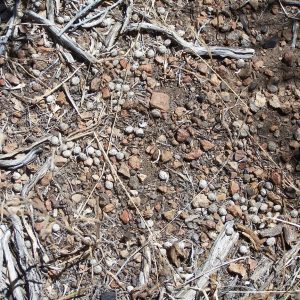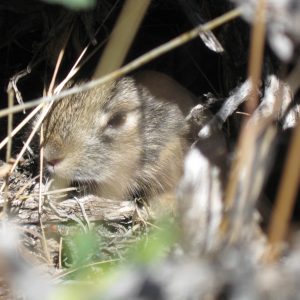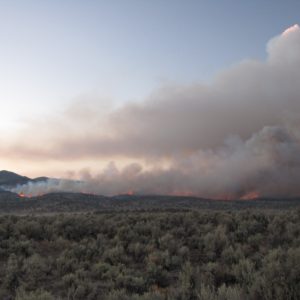California is famous for its wildfires. I always thought that only Southern California had the big ones, but maybe that’s all they show on the news. As it turns out, a couple of weeks ago there was a huge lightning storm within my field office boundary. That night and the next day, the BLM Fire crews were working like crazy to put out all of the smoking juniper trees. Unfortunately, with a ton of fires on their plate, one small fire started to take off. From a single tree, it burned 8 acres, then 50, then 150, and the next thing we knew, 11,000 acres of public and private land had been burnt. It would have been much more without the hundreds of firefighters working night and day for 2 weeks to contain it. I bring up this fire because it’s one more subject out here that I’m gaining knowledge in. If I weren’t working for the BLM through the CBG, I wouldn’t have had this experience! I can confidently say that before this, the biggest wildland fire I’d seen was a couple-acre prairie burn. Now, I wasn’t up-close and personal with this fire for safety reasons, but I got to see how different federal and state agencies come together to fight fire, the logistics involved, and how the landscape and weather affects how a fire burns. Tomorrow I’m going to the site to view what the habitat looks like now. The fire actually burned up a portion of one of the juniper-cut areas that I flagged, so it will be neat to compare the before and after.
Other than that, some highlights of the last month or so include: vegetation monitoring on a fuels reduction site (juniper cut) 2 years post-cut, seed collecting in the picturesque sagebrush-steppe, and learning how to do Pygmy Rabbit surveys. I recently spent a couple of days inventorying a juniper-cut project site for sensitive wildlife species such as raptors, sandhill cranes, and sage grouse and really enjoyed it. Also, last night from 9pm-3am I helped the local Fish & Wildlife refuge with waterfowl banding; we netted ducks from airboats, brought them back to shore, and banded them. I had the time of my life!
I had one more work experience that is worth mentioning. Earlier this summer, I was hiking along a stream to flag an aspen stand on BLM land. I was only about 30 minutes walking distance from where my vehicle was parked near the highway when I stumbled upon a marijuana garden! The evidence was obvious, even for someone who didn’t know what signs to look for yet (we were having safety training and a marijuana garden presentation the next day, ironically): depressions in the ground with a few seedlings in each, fertilizer pellets in them, and black irrigation hosing to each depression. And I could see hundreds of these from where I was standing! I quickly snapped a few pictures and called my mentor who told me to high-tail it back to the truck. I had a long talk with our Law Enforcement Officer about what I’d found, and the next week they took a team out to raid the area and found nearly 10,000 plants. Wow! If I took anything away from this experience, I learned that there are definitely safety hazards when it comes to managing public lands – but I think I was prepared enough and equipped enough to handle the situation safely.
After a couple of months in tiny Alturas, California, the place is really growing on me. The wildlife work is exciting each day and the small-town feel is kind of comforting. I’m glad I still have a few more months!
Kristen Linner, BLM Alturas, CA



